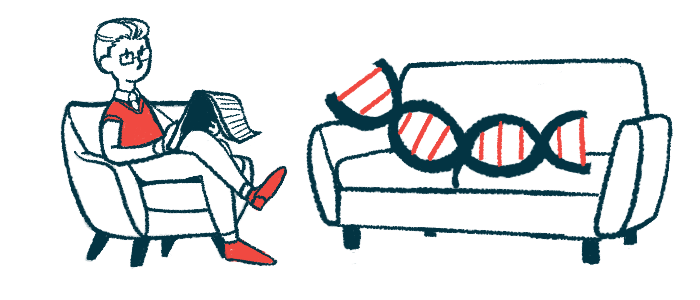Researchers suggest how to select right candidates for gene therapy
Criteria: diagnosis, motor dysfunction, persistent symptoms, parental consent

Researchers have proposed a set of factors for doctors to consider when deciding if a patient is a good fit to undergo gene therapy for aromatic l-amino acid decarboxylase (AADC) deficiency.
Suggested criteria include: genetically and biochemically confirmed disease, lack of achievement of motor milestones and/or persistent movement disorders, ongoing neurocognitive or systemic symptoms despite treatment, and informed consent from parents for the procedure.
These considerations were discussed in a review, titled “Patient selection considerations for AADC deficiency gene therapy,” which was published recently in Annals of the Child Neurology Society.
AADC deficiency is caused by mutations in both copies of the DDC gene, which provides instructions for making the AADC enzyme. AADC is important for the production of a number of important brain signaling chemicals, or neurotransmitters.
A lack of functional AADC in the disease causes a neurotransmitter deficiency and a wide range of symptoms such as movement disorders, seizures, mood problems, and dysregulated involuntary (autonomic) body functions, among others.
Gene therapies address underlying genetic cause of disease
Gene therapies for AADC deficiency work to provide patients with a functional copy of the DDC gene, thereby addressing the underlying genetic cause of disease as a one-time treatment.
In 2022, the gene therapy Upstaza (eladocagene exuparvovec) became the first and only approved disease-modifying therapy for AADC deficiency. It was cleared for patients 18 months and older in the European Union and U.K.
Delivered via infusion directly into an area of the brain called the putamen, Upstaza has shown to markedly improve motor and cognitive function, with children achieving motor milestones such as head control up to 10 months post-treatment.
A similar investigational gene therapy was also found to lead to motor and cognitive gains for AADC deficiency patients in a Phase 1/2 study (UMIN000017802) conducted in Japan.
An ongoing Phase 1 clinical trial (NCT02852213) in the U.S. is evaluating a gene therapy that targets other regions of the brain. Data thus far have shown the treatment leads to improvements in motor function, mood, and cognition.
Across all of these trials, patients were found to experience dyskinesia, or involuntary muscle contractions, as a side effect after treatment.
The treating physician should weigh the risks and benefits of gene augmentation therapy in patients with mild to moderate impairment given the limited evidence in this population.
Gene therapy shown to improve motor, cognitive, autonomic function
“Although the long‐term benefit–risk profile … in large numbers of patients is not yet fully established, the data published to date have demonstrated that gene therapy for AADC deficiency was well tolerated and resulted in improved motor, cognitive, and autonomic function,” the researchers wrote.
As gene therapy for AADC deficiency becomes a reality, a group of international experts in neurologic conditions have established guidelines for the safe application of the therapy. However, there is still a need for criteria as to which patients should be considered for these treatments, according to the authors.
After discussing clinical trial findings in their review, the scientists proposed four criteria for selecting appropriate patients for gene therapy.
First, a confirmed diagnosis of AADC deficiency is critical, they noted. This should include not only genetic testing, but also tests of AADC activity in the blood and levels of certain disease biomarkers in the cerebrospinal fluid that surrounds the brain and spinal cord.
The researchers recommended, in terms of clinical presentation, that eligible patients should have failed to achieve motor milestones and/or be experiencing clinically significant movement disorders.
They should also experience persistent neurocognitive symptoms (e.g. language impairments) and other systemic symptoms (e.g. gastrointestinal issues) despite having received standard medical therapies such as dopamine agonists or monoamine oxidase inhibitors for at least three months. Such symptoms should have a substantial effect on quality of life for patients and caregivers.
Finally, the scientists indicated that gene therapy is only appropriate when parents or caregivers give informed consent to the treatment. That’s especially important in light of the fact that the procedure involves surgery.
Gene therapy could benefit patients with milder disease
The team indicated that while clinical trials have largely involved severely affected patients, gene therapy could have benefits in people with milder disease.
For example, one moderately affected patient treated in the Japanese trial was restored to a “nearly normal life,” with the ability to walk and play independently, the team noted.
“The treating physician should weigh the risks and benefits of gene augmentation therapy in patients with mild to moderate impairment given the limited evidence in this population,” the researchers wrote.
Additional insights into gene therapy patient selection may also be gained by collecting and examining data through standardized patient registries, the team concluded.
The study was funded by PTC Therapeutics, which markets Upstaza.







